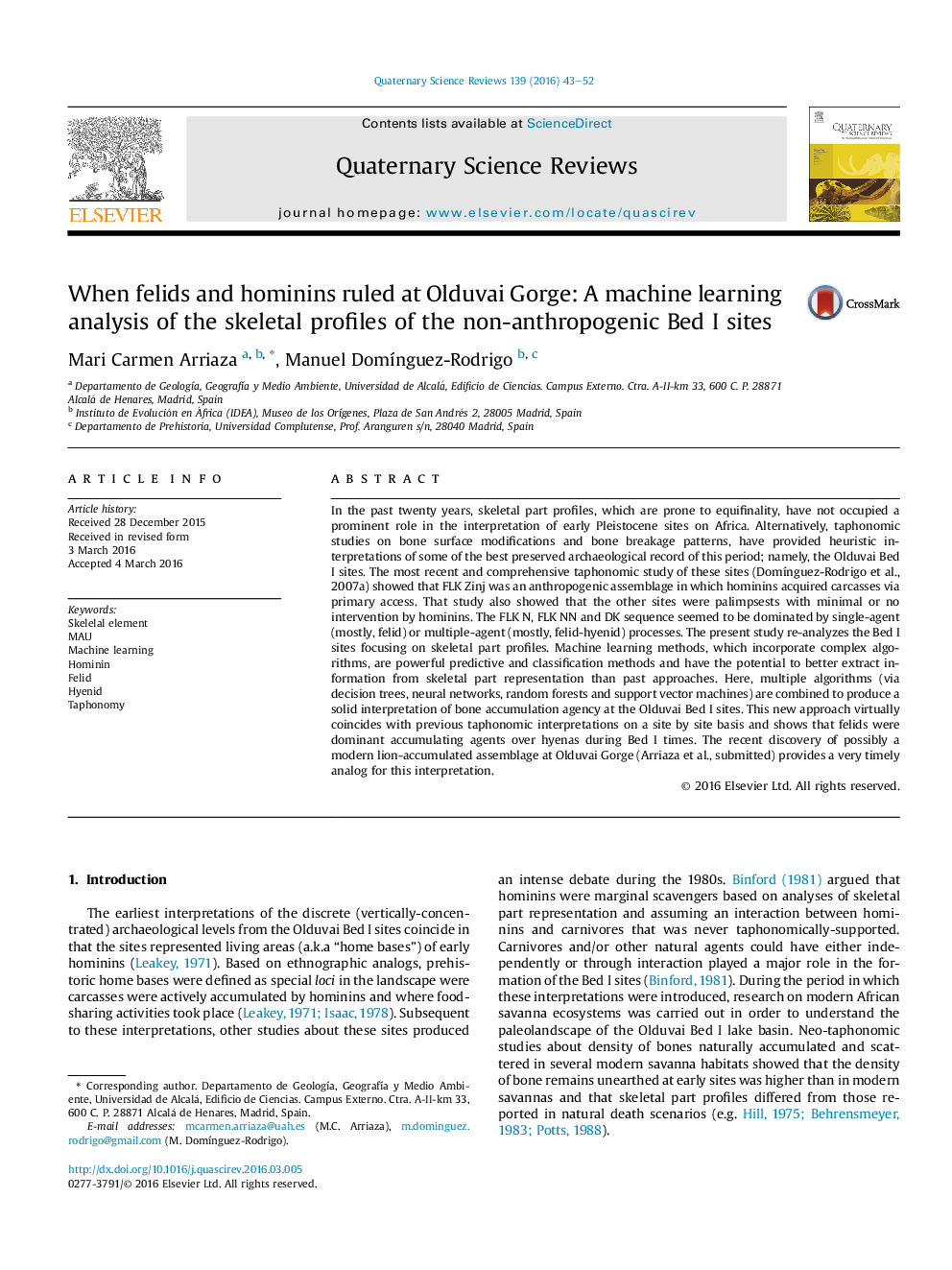| کد مقاله | کد نشریه | سال انتشار | مقاله انگلیسی | نسخه تمام متن |
|---|---|---|---|---|
| 6445423 | 1640796 | 2016 | 10 صفحه PDF | دانلود رایگان |
عنوان انگلیسی مقاله ISI
When felids and hominins ruled at Olduvai Gorge: A machine learning analysis of the skeletal profiles of the non-anthropogenic Bed I sites
دانلود مقاله + سفارش ترجمه
دانلود مقاله ISI انگلیسی
رایگان برای ایرانیان
کلمات کلیدی
موضوعات مرتبط
مهندسی و علوم پایه
علوم زمین و سیارات
زمین شناسی
پیش نمایش صفحه اول مقاله

چکیده انگلیسی
In the past twenty years, skeletal part profiles, which are prone to equifinality, have not occupied a prominent role in the interpretation of early Pleistocene sites on Africa. Alternatively, taphonomic studies on bone surface modifications and bone breakage patterns, have provided heuristic interpretations of some of the best preserved archaeological record of this period; namely, the Olduvai Bed I sites. The most recent and comprehensive taphonomic study of these sites (DomÃnguez-Rodrigo et al., 2007a) showed that FLK Zinj was an anthropogenic assemblage in which hominins acquired carcasses via primary access. That study also showed that the other sites were palimpsests with minimal or no intervention by hominins. The FLK N, FLK NN and DK sequence seemed to be dominated by single-agent (mostly, felid) or multiple-agent (mostly, felid-hyenid) processes. The present study re-analyzes the Bed I sites focusing on skeletal part profiles. Machine learning methods, which incorporate complex algorithms, are powerful predictive and classification methods and have the potential to better extract information from skeletal part representation than past approaches. Here, multiple algorithms (via decision trees, neural networks, random forests and support vector machines) are combined to produce a solid interpretation of bone accumulation agency at the Olduvai Bed I sites. This new approach virtually coincides with previous taphonomic interpretations on a site by site basis and shows that felids were dominant accumulating agents over hyenas during Bed I times. The recent discovery of possibly a modern lion-accumulated assemblage at Olduvai Gorge (Arriaza et al., submitted) provides a very timely analog for this interpretation.
ناشر
Database: Elsevier - ScienceDirect (ساینس دایرکت)
Journal: Quaternary Science Reviews - Volume 139, 1 May 2016, Pages 43-52
Journal: Quaternary Science Reviews - Volume 139, 1 May 2016, Pages 43-52
نویسندگان
Mari Carmen Arriaza, Manuel DomÃnguez-Rodrigo,